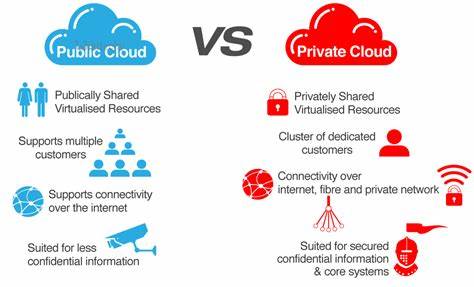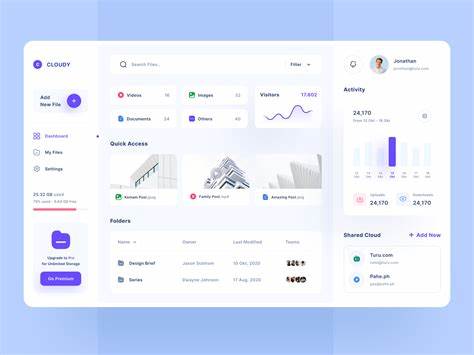Table of Contents
Introduction:
Cloud computing is a buzzword that has been thrown around for years, but many people still don’t understand what it means or how it can benefit their business. In simple terms, cloud computing is the delivery of computing services – including servers, storage, databases, networking, software, analytics, and intelligence – over the internet (“the cloud”). In this article, we’ll explore the benefits of cloud computing, the different types of cloud computing, the challenges of cloud computing, and tips for successful cloud migration.
Benefits of Cloud Computing:
- Scalability: One of the biggest advantages of it is its scalability. Businesses can quickly scale up or down their computing resources based on demand, without having to invest in expensive hardware or infrastructure.
- Cost Savings: It can help businesses save money on hardware, software, and maintenance costs. Since cloud providers handle the infrastructure, businesses can focus on their core competencies and not worry about the technical details.
- Accessibility: It allows businesses to access their data and applications from anywhere, at any time, on any device. This can be especially beneficial for remote teams or businesses with multiple locations.
- Disaster Recovery: It can help businesses protect their data in case of a disaster or outage. Since data is stored in the cloud, businesses can quickly recover their data and applications without having to worry about on-site backups.
- Collaboration: It can facilitate collaboration among team members, as they can access and edit documents in real time from different locations. This can help improve productivity and streamline workflows.
Advantage of Cloud Computing:
Cloud computing offers numerous advantages for businesses, including:
- Cost savings: It eliminates the need for businesses to invest in expensive hardware and software, reducing their upfront costs. Businesses can also pay only for the resources they use, making it a more cost-effective solution than traditional IT infrastructure.
- Scalability: It allows businesses to easily scale their resources up or down, depending on their needs. This can help them avoid overprovisioning or underprovisioning, which can result in wasted resources and increased costs.
- Flexibility: It offers businesses the flexibility to access their data and applications from anywhere, at any time, using any device with an internet connection. This can improve collaboration and productivity among team members, as well as enable remote work.
- Disaster recovery: It offers businesses a reliable disaster recovery solution, as it provides automatic backups and redundancy. In case of a disaster, businesses can quickly restore their data and applications, minimizing downtime and avoiding data loss.
- Security: It offers robust security features, including encryption, access control, and monitoring, to protect businesses’ data and applications from cyber threats. Cloud providers also have dedicated teams to manage security, which can help businesses improve their security posture.
Overall, cloud computing can help businesses improve their efficiency, productivity, and profitability, by providing a scalable, flexible, and secure IT infrastructure.

Types of Cloud Computing:
- Public Cloud: A public cloud is a cloud computing environment that is open to the public and hosted by a third-party provider. Public clouds are generally more affordable and easier to set up than private clouds.
- Private Cloud: A private cloud is a cloud computing environment that is dedicated to a single organization. Private clouds offer more control and security than public clouds, but are generally more expensive and complex to set up.
- Hybrid Cloud: A hybrid cloud is a cloud computing environment that combines public and private clouds. Hybrid clouds offer the benefits of both public and private clouds, such as scalability and security.
Disadvantage of Cloud Computing:
While there are numerous advantages to cloud computing, there are also some potential disadvantages that businesses should be aware of, including:
- Downtime: While cloud providers strive to provide high uptime, the internet connectivity and infrastructure used to access cloud services can still experience downtime. This can result in business disruption and lost productivity.
- Security and Privacy: Cloud computing can expose businesses to security and privacy risks, as sensitive data and applications are stored on servers managed by third-party providers. To mitigate these risks, businesses should ensure that their cloud provider has proper security measures in place, such as encryption and access control.
- Dependence on Internet Connectivity: It requires a reliable and fast internet connection to access data and applications, which can be a challenge in areas with limited connectivity or in case of internet outages.
- Compliance and Regulatory Challenges: Businesses operating in regulated industries or jurisdictions may face compliance and regulatory challenges when using cloud computing. Cloud providers may have different compliance standards or may not be located in jurisdictions that meet regulatory requirements.
- Data Portability: Moving data and applications between cloud providers or back to on-premises infrastructure can be challenging, and may result in vendor lock-in or data loss.
Overall, businesses should carefully consider the potential disadvantages of cloud computing before adopting the technology. By understanding the risks and challenges, and working with a reputable cloud provider, businesses can effectively mitigate these risks and enjoy the benefits of cloud computing.

Use of Cloud Computing:
Cloud computing has a wide range of applications across various industries, including:
- Data storage and backup: It provides businesses with a secure and scalable solution for storing and backing up their data. This eliminates the need for expensive and complex on-premises storage systems and provides businesses with access to their data from anywhere, at any time.
- Software as a service (SaaS): It enables the delivery of software as a service, which allows businesses to access applications and software over the internet, rather than installing and maintaining them on their own infrastructure. This can reduce costs and improve flexibility.
- Infrastructure as a service (IaaS): It provides businesses with a flexible and scalable infrastructure for running their applications and services. This can reduce upfront costs and enable businesses to quickly provision and de-provision resources as needed.
- Platform as a service (PaaS): It provides businesses with a development platform for building and deploying their applications. This can streamline the development process and reduce time-to-market.
- Internet of Things (IoT): It can support the processing and analysis of data generated by IoT devices, providing businesses with valuable insights and enabling them to make data-driven decisions.
- Machine Learning and Artificial Intelligence (AI): Cloud computing provides businesses with the computational power and storage necessary for running machine learning and AI algorithms, enabling them to develop intelligent applications and services.
Overall, cloud computing provides businesses with a flexible, scalable, and cost-effective solution for managing their data, applications, and infrastructure. As a result, it has become a critical technology for businesses of all sizes and across all industries.
Challenges of Cloud Computing:
- Cloud Security: One of the biggest challenges of cloud computing is security. Since data is stored in the cloud, businesses need to ensure that their data is protected from hackers, viruses, and other threats.
- Cloud Migration: Migrating to the cloud can be a complex and time-consuming process. Businesses need to ensure that their data is properly backed up and that their applications are compatible with the cloud environment.
- Cloud Management: Managing cloud resources can be a challenge, especially for businesses with limited IT staff. Businesses need to ensure that their cloud resources are being used effectively and efficiently.
Tips for Successful Cloud Migration:
- Plan Ahead: Businesses should plan their cloud migration carefully, including assessing their current infrastructure, determining their cloud requirements, and selecting a cloud provider.
- Test and Validate: Businesses should test and validate their cloud migration plan before implementing it, to ensure that their data and applications are compatible with the cloud environment. This can help minimize downtime and avoid data loss during the migration process.
- Prioritize Security: Businesses should prioritize security during the cloud migration process, by encrypting their data and ensuring that their cloud provider has proper security measures in place. This can help protect their data from unauthorized access and data breaches.
- Train Employees: Businesses should train their employees on the use of cloud resources, to ensure that they understand how to use the new technology and can maximize its benefits. This can help improve productivity and avoid potential security risks.
- Monitor and Optimize: Once the cloud migration is complete, businesses should monitor and optimize their cloud resources to ensure that they are being used effectively and efficiently. This can help minimize costs and improve performance.
- Cloud computing is a powerful technology that can help businesses improve their productivity, reduce costs, and enhance collaboration. By understanding the benefits, types, and challenges of cloud computing, and following best practices for cloud migration, businesses can successfully adopt cloud computing and achieve their business goals.

Conclusion:
It has revolutionized the way businesses operate, offering a wide range of benefits and advantages over traditional on-premises infrastructure. With cloud computing, businesses can access scalable and flexible infrastructure, software, and platforms, without having to invest in expensive hardware and software.
Cloud computing also provides businesses with a secure and reliable solution for storing and backing up their data, running their applications and services, and developing intelligent applications and services using machine learning and AI. The benefits of cloud computing have made it a critical technology for businesses of all sizes and across all industries.
However, as with any technology, cloud computing also comes with some potential disadvantages and challenges, such as security and privacy risks, dependence on internet connectivity, and compliance and regulatory challenges. To fully realize the benefits of cloud computing, businesses should carefully consider these potential challenges and work with reputable cloud providers to mitigate the risks.
Overall, cloud computing offers significant benefits to businesses, including cost savings, flexibility, scalability, and improved access to data and applications. As technology continues to evolve, the role of cloud computing in the business landscape is likely to become even more important, enabling businesses to stay competitive and innovative in an increasingly digital world.


